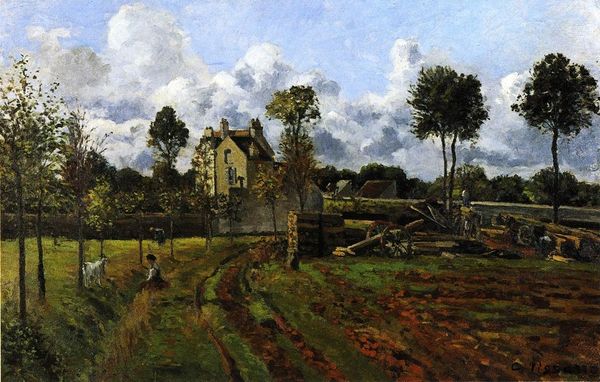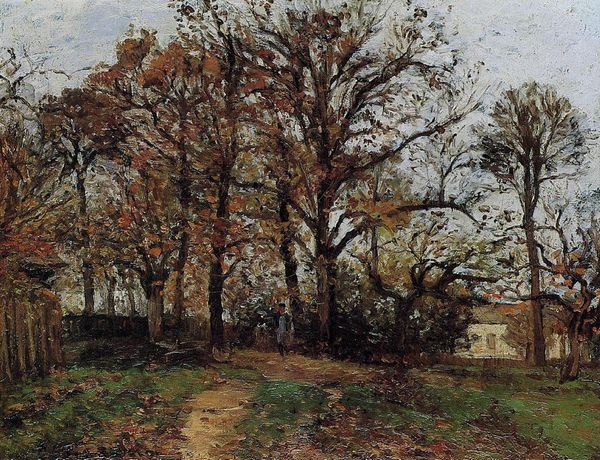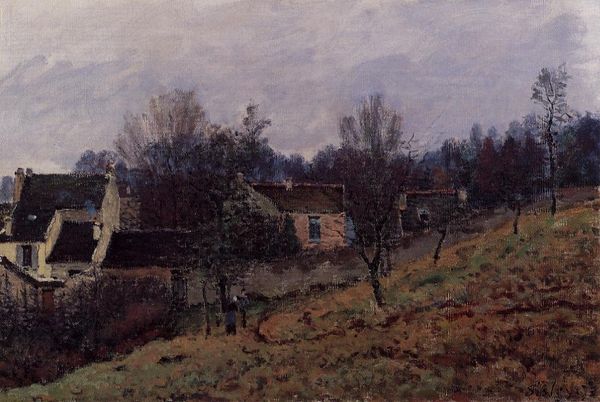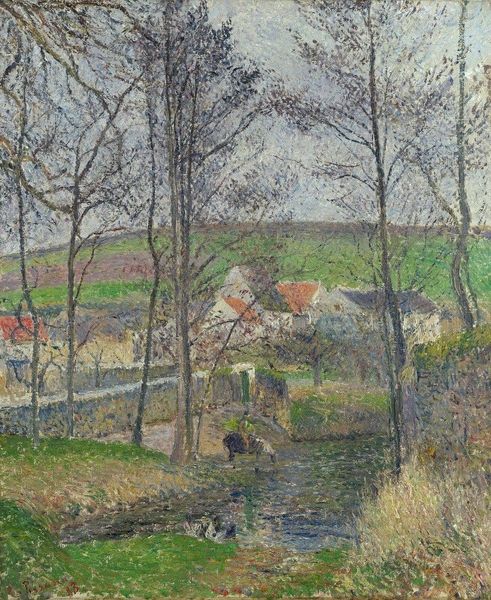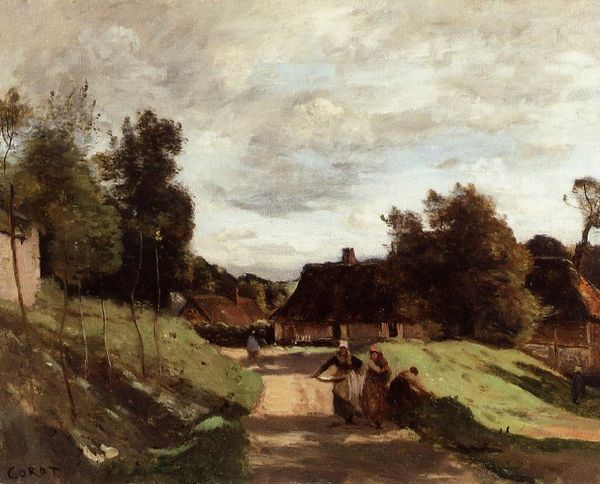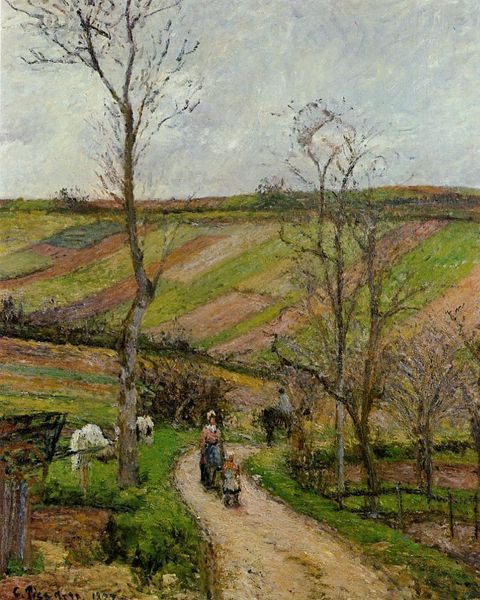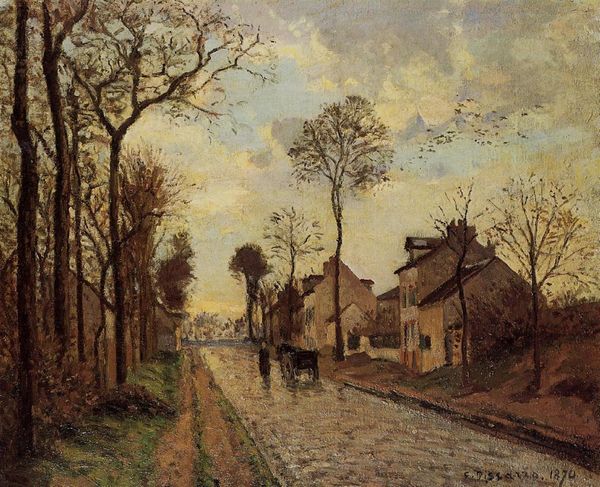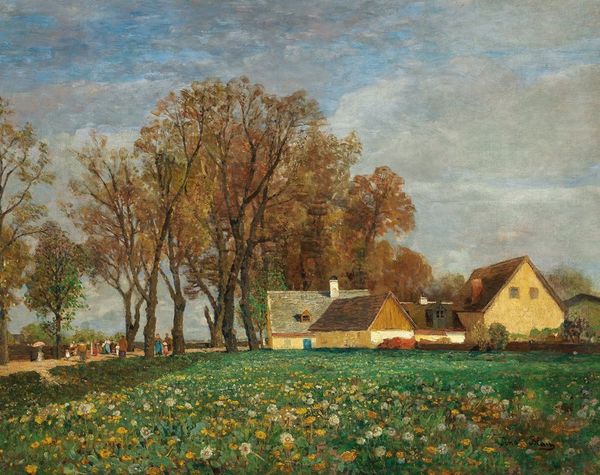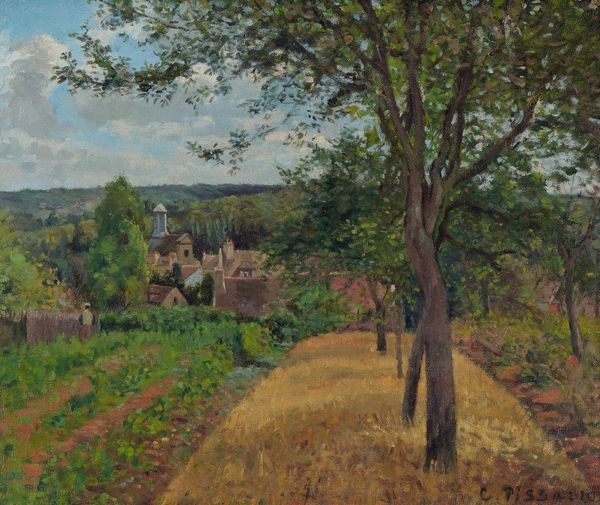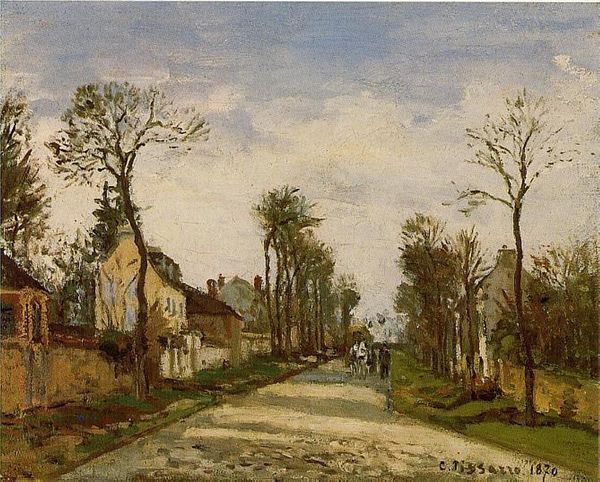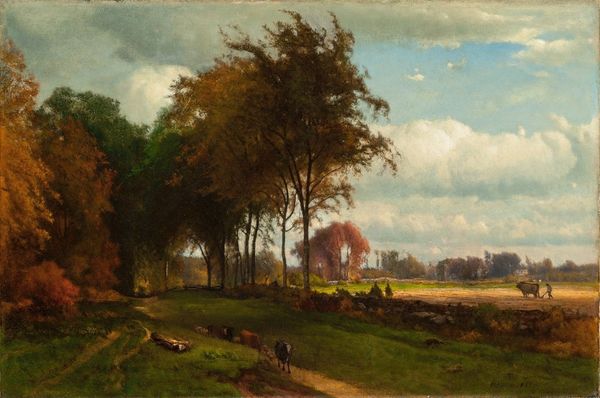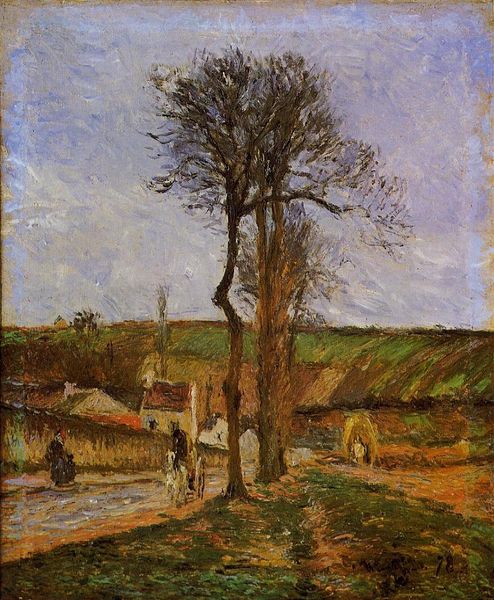
plein-air, oil-paint
#
impressionism
#
plein-air
#
oil-paint
#
landscape
#
impressionist landscape
#
figuration
#
oil painting
#
road
#
cityscape
#
watercolor
Copyright: Public domain
Editor: This is Camille Pissarro’s "Louveciennes," painted in 1871, using oil paint in the plein-air style. It feels like such a grounded scene. I am intrigued by his material handling of the scene; you can see the path and the road are rendered using what look like relatively thick marks. How would you describe it? Curator: This work presents a clear connection to the means of its own making, especially regarding social context. Pissarro created "Louveciennes" during a tumultuous period, just after the Franco-Prussian War, where landscape painting was radically influenced by economic and sociopolitical factors. Think about the materials: oil paint becoming more widely available, the ease of transporting canvases for painting en plein air, and consider how the burgeoning art market supported scenes of everyday life. Editor: So, you're suggesting the work's material reality directly reflects the social and economic shifts of the time? Curator: Precisely! The accessible materials, the rapid execution necessitated by plein air, they all democratize the artistic process, moving away from the idealized landscapes of the past. Note the rendering of that road and houses, their muted colours that emphasize practicality over picturesqueness, or ideal beauty. Do you think that aesthetic decisions and class interact in this piece? Editor: I think I see what you're getting at, these paintings provided access to this region and were traded in a globalizing market. I hadn’t previously considered that Pissarro's choice of materials wasn't just about aesthetics but about this whole network. It really reframes the landscape as an artifact of its time! Curator: Exactly. And that perspective invites us to investigate these processes!
Comments
No comments
Be the first to comment and join the conversation on the ultimate creative platform.

